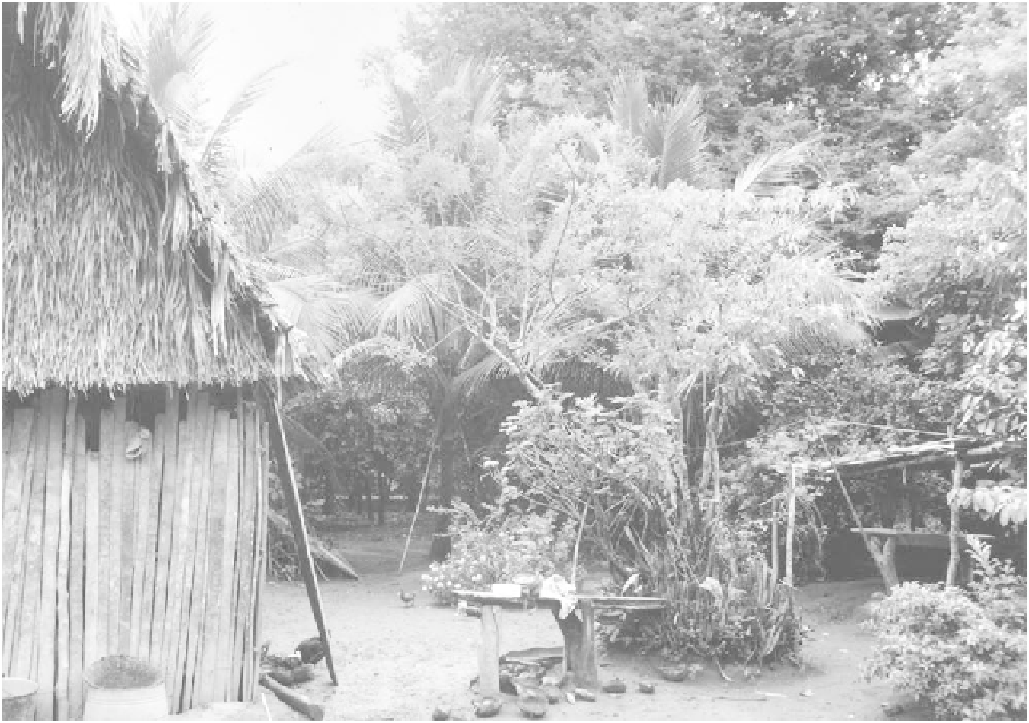Agriculture Reference
In-Depth Information
FIGURE 17.9
A traditional tropical home garden in Cupilco, Tabasco, Mexico.
A diverse mixture of useful herbs, shrubs, and
trees are associated with the area close to the dwelling.
The home garden is an integrated ecosystem of
humans, plants, animals, soils, and water, with trees play-
ing key ecological roles. It usually occupies a well-
defined area, between 0.5 and 2.0 ha in size, in close
proximity to a dwelling. Rich in plant species, home
gardens are usually dominated by woody perennials; a
mixture of annuals and perennials of different heights
forms layers of vegetation resembling a natural forest
structure. The high diversity of species permits year-
round harvesting of food products and a wide range of
other useful products, such as firewood, medicinal
plants, spices, and ornamentals. Tropical home gardens
also provide good opportunities for incorporating domes-
tic animals such as chickens (Méndez et al., 2001; Del
Angel-Perez and Mendoza, 2004; Kehlenbeck and
Maass, 2005).
In a study of home gardens in both upland and lowland
sites in Mexico, it was found that in quite small areas
(between 0.3 and 0.7 ha) high diversity permitted the
maintenance of gardens that in many aspects were similar
to the local natural ecosystems (Allison, 1983). The gar-
dens studied had relatively high indices of diversity for
cropping systems (Table 17.4), and had leaf area indices
and cover levels that approximated the much more com-
plex natural ecosystems of the surrounding regions.
In another study (Ewel et al., 1982), in which nine
different tropical ecosystems were analyzed for a series
of ecosystem characteristics, a 40-yr-old home garden was
found to have the most evenly distributed canopy — one
that was fairly uniformly stratified from ground level to
more than 14 m in height. Its leaf area index was 3.9 and
its percent cover 100%, and the leaf biomass per square
meter (307 g/m2) was the next-to-highest among all of
the ecosystems examined. Total root biomass per square
meter down to a depth of 25 cm was identical to leaf
biomass. Perhaps most importantly, of the nine systems
tested, the first 25 cm of the home garden's soil had the
highest small-diameter (< 5 cm) root surface area per area
of ground surface. These traits are indicative of an
H
IGH
D
IVERSITY
The ecological diversity of home gardens — including
diversity of species, structure, function, and vertical and
horizontal arrangement — is remarkably high. Two exam-
ples serve as illustrations.

Search WWH ::

Custom Search